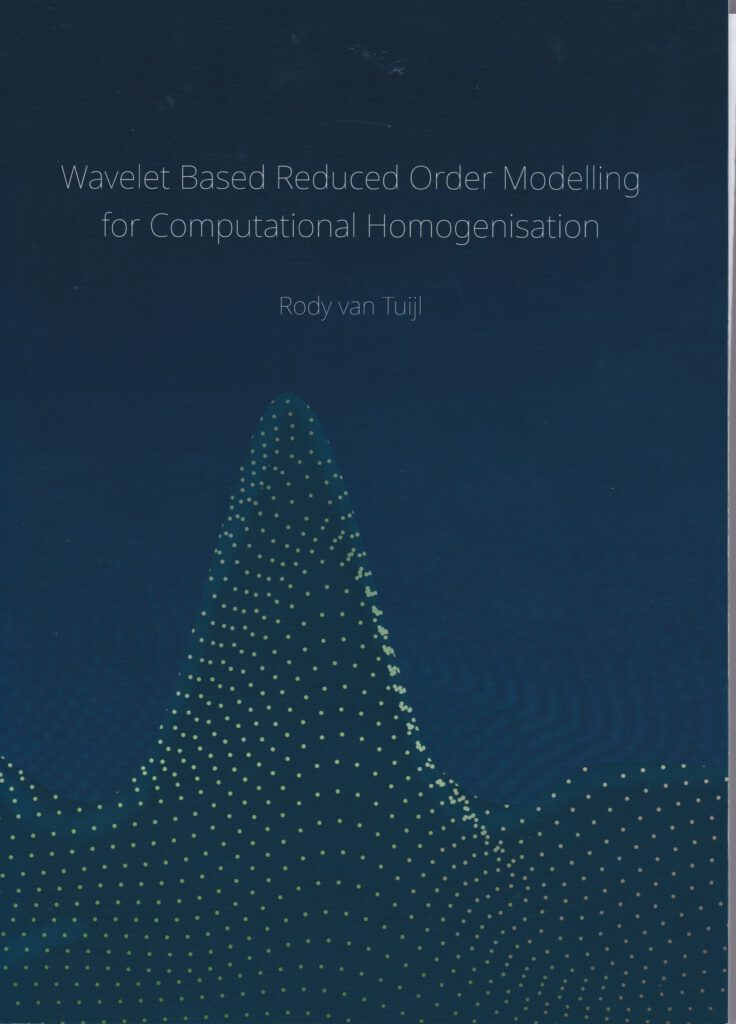This project was part of the bigger METAMAT project, under the supervision of Marc Geers.
(van Tuijl et al., 2019) (van Tuijl et al., 2018) (van Tuijl et al., 2020) (Kaiser et al., 2023) (Kaiser et al., 2022) (van Tuijl, 2019)
| Project | METAMAT |
| Funding | ERC Advanced Grant (Marc Geers) |
| Years | 2013-2019 |
| PhD-candidate | Rody van Tuijl |
| Supervisors | Marc Geers (PI), Joris Remmers |
| Collaborators | Tobias Kaiser (Dortmund University) |
References
2023
-
A wavelet-enhanced adaptive hierarchical FFT-based approach for the efficient solution of microscale boundary value problems
Computer Methods in Applied Mechanics and Engineering, May 2023
2022
-
An adaptive wavelet-based collocation method for solving multiscale problems in continuum mechanics
Computational Mechanics, May 2022
2020
-
Multi-dimensional wavelet reduction for the homogenisation of microstructures
Computer Methods in Applied Mechanics and Engineering, May 2020
One of the recent fields of interest in computational homogenisation is the development of model order reduction frameworks to address the significant computational costs enabling fast and accurate evaluation of the microstructural volume element. Model order reduction techniques are applied to computationally challenging analyses of detailed micro- and or macro-structural problems to reduce both computational time and memory usage. In order to alleviate the costly integration, a wavelet-reduced order model for one-dimensional microstructural problems was presented in van Tuijl et al. (2019). This novel approach addresses both the large number of degrees of freedom and integration costs and provides control on errors in the microstructural fields. In this work, this wavelet reduced order model is extended to a multi-dimensional framework and benchmarked for more realistic multi-scale problems. The Wavelet-Reduced Order Model consists of two reduction steps. First, a Reduced Order Model is constructed to reduce the dimensionality of the microstructural model. Second, a wavelet representation is applied to reduce the integration costs of the microstructural model, whilst maintaining control over the local integration error. The multi-dimensional Wavelet-Reduced Order Model is demonstrated for a set of two-dimensional path-dependent microstructural models, evaluating their accuracy and reduction with respect to the full order models on the microstructural and homogenised fields.
2019
-
Wavelet Based Reduced Order Models for Microstructural Analyses
Computational Mechanics, May 2019
-
Parallelisation and multiscale reduced order modelling
Rody Tuijl
Eindhoven University of Technology, May 2019
Marc G.D. Geers (Promotor), Joris J.C. Remmers (Copromotor)
2018
-
Integration Efficiency for Model Reduction in Micro-Mechanical Analyses
Computational Mechanics, May 2018
 Parallelisation and multiscale reduced order modellingEindhoven University of Technology, May 2019Marc G.D. Geers (Promotor), Joris J.C. Remmers (Copromotor)
Parallelisation and multiscale reduced order modellingEindhoven University of Technology, May 2019Marc G.D. Geers (Promotor), Joris J.C. Remmers (Copromotor)